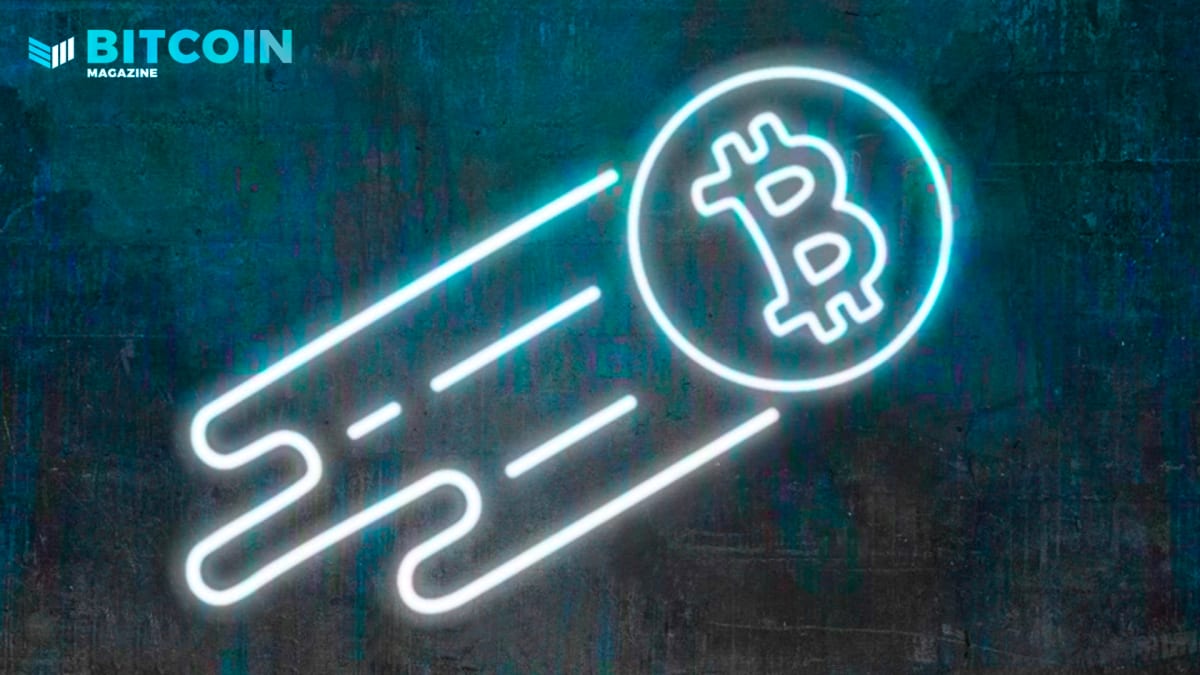2021-1-9 20:16 |
How Information-Freeing Innovation Shapes Society
This is the story of two disruptive innovations, which arrived several centuries apart with remarkable similarities. It’s about the largely invisible technological forces that alter incentives of obedience and steer the evolution of how societies are organized.
The Mistrust Of InstitutionsTrust is the key ingredient that enables us to cooperate and trade. The greater our access to information, the greater our ability to assess reputation and therefore trustworthiness. When it becomes easier to establish trust through verifying truth, those who benefited most from the previous opacity are often the first, and the loudest, critics.
Making promises that are known to be outside of your control or powers is a sure fire way to degrade trust. That’s why large institutions, dependent on a mass audience for survival, make promises in ways that are difficult to measure over loosely-defined timelines. This is often combined with actively limiting access to the very information needed to make such an assessment.
But this is largely a story about innovation and the institutions that derive power as gatekeepers for the flow of information.
The Great Famine And The Black DeathInnovation, by definition, must be useful to society. So, it’s no surprise that it explodes onto the scene at precisely the time it is demanded. In the Middle Ages, Western Europe was under control of the Roman Catholic Church — the primary institution seen as responsible for people’s wellbeing. It held an undisputed level of influence and moral authority. However, two crucial events would cause people to question what seemed an unshakable level of devotion.
Between 1315 and 1322, famine struck Europe, reducing the population of towns and cities by an estimated 10 percent to 25 percent. Bad weather caused flooding, which caused crop failures, which led to cattle starvation, and a downward spiral ensued.
Twenty-five years later, fleas, carried by rats aboard European ships returning from Asia, would ignite the deadliest pandemic in recorded human history. The Black Death (1346 to 1353) resulted in the deaths of between 75 million and 200 million people.
This catastrophic population loss fundamentally altered the power structures between landowner and laborer.
Underlying image source: “Citizens Of Tournai Bury Black Plague Victims,” Pierart dou Tielt, 1340 to 1360. Public domain. The Global Financial Crisis And COVID-19Today, the global financial crisis of 2007 and 2008 (and subsequent bailouts, as referenced in Bitcoin’s genesis block), coupled with the botched response to the COVID-19 pandemic from global bodies and governments, has severely damaged the social contract with citizen taxpayers. Misaligned incentive structures have created a moral hazard among elected officials and unelected central bankers.
Underlying image source: James Keivom, Daily MailTelling a person that their cost of living has not increased and that their quality of life has decreased when it directly contradicts lived experience is one way to prove ignorance, malice or both. The uneven distribution of inflation as a result of unprecedented currency debasement is no longer able to be hidden in a world where all kinds of market data is available in every pocket.
“The trend of more wealth inequality, more polarization and more discord is a major threat to our collective future. And it is all being caused by the same thing: adherence to an economic system designed for a different time.” — Jeff Booth, “The Price of Tomorrow”
A Heavy Tax No Longer ToleratedAuthority dependent upon tax collection requires a captive and compliant population. A few conditions are necessary — there’s a clearly defined and guarded jurisdiction, there are incentives to create wealth within it and there are barriers/deterrents to prevent a critical mass from exiting the jurisdiction with their wealth or specialized knowledge.
What Johannes Gutenberg and Satoshi Nakamoto gave us were new methods to permissionlessly transport information across time and space, outside the purview of the establishment. This challenges gatekeeper monopolies that are reliant on taxation, incentivizing them to act honestly and provide a valuable service to retain patronage.
On InnovationParadigm shifts often come from the ensuing market forces as a result of innovation, rather than top-down decrees. The recipe for adoption requires it be a) easy to replicate once discovered and b) dumb or neutral (allowing for tinkering on the fringes).
For Gutenberg, the printing press was made possible by a handful of existing inventions: paper making from pulp, metal casting and the wine press. His own skills, knowledge and experiences (as an intellectual, an engineer and a merchant) likely also explain why he was so well positioned to see and grasp this opportunity to innovate.
Additionally, by the time the printing press was unveiled, eye glasses were in broad use. This allowed a much wider population to not only read, but to read with magnification, enabling Gutenberg to reduce the size of text and thus the number of pages required in a book.
Parallels can be drawn in how Nakamoto designed the Bitcoin protocol, well aware of the fact that data storage costs would continue to trend downwards over time, increasing the pool of participants able to operate a node.
“The genius of Bitcoin, in inventing a digital currency successful in the real world, is not in creating any new abstruse mathematics or cryptographic breakthrough, but in putting together decades-old pieces in a semi-novel but extremely unpopular way.” – Gwern Branwen, “Bitcoin Is Worse Is Better”
A key feature of both Bitcoin and the printing press is that they are dumb innovations: they cannot distinguish between the content being created and communicated.
“The dumb network becomes a platform for independent innovation, without permission, at the edge. The result is an incredible range of innovations, carried out at an even more incredible pace.” -Andreas M. Antonopoulos, “Why Dumb Networks Are Better”
Monopolies On KnowledgeAs books became more accessible and affordable, individuals were now personally consuming, reflecting upon and critiquing written texts. It was an idea meritocracy. No longer was “truth” conferred solely by the ordained to the illiterate masses inside of churches.
Printing presses and print shops were cropping up all over the continent and, like the spread of the Black Death, mass-produced printed books and texts were now spreading across Europe and the world with similar force. It was the start of mass communication and it ended the Church’s monopoly over knowledge, including interpretations of religious texts.
A sharp increase in literacy rates across Europe, as a result of the lowered cost of books, meant that the literate elite would soon be challenged. Eventually, this would also lead to an emerging middle class.
Fast forward to the present day, where global financial literacy is the next major frontier to unlocking human potential and innovation. As was the case with literacy in the Middle Ages, financial literacy is a privilege currently afforded by the wealthy and elite. Similarly, as literacy rates rose as a result of increased access to books, it can be hypothesized that financial literacy will rise with access to sound money.
Communication ProtocolsWe use protocols for transmitting data between each other and machines each day: SMTP (email), American sign language, TCP/IP, etc. Protocols earn their adoption by giving users greater means of expression, fidelity, efficiency or scale in their ability to communicate.
Gutenberg’s press standardized the process for packaging and transmitting information through the mass production of books and pamphlets. Previously, the process was undertaken by hand using trained monks as labor. His movable metal type system increased the speed and reduced the cost of book production, enabling the dissemination of information on a massive scale.
Bitcoin has, quite simply, turned money into data. By standardizing the structure of transactions and significantly reducing the costs to verify them, we can now transact peer to peer and across great distances.
Sources: https://commons.wikimedia.org/wiki/File:Gutenberg_bible.jpg and http://www.righto.com/2014/02/bitcoin-mining-hard-way-algorithms.htmlOpen protocols like Bitcoin enable pseudonymous transactions — an extension of the pseudonymous digital identities that have already become commonplace. Practically speaking, this is very hard and costly to combat. For centuries, authors have employed pseudonyms to publish work so that it may be assessed on its own merit rather than through any associated preconceptions held by the reader. It gives a voice to the underrepresented and provides protection to the vulnerable. Of course, this can certainly be abused, but we must weigh the benefits.
Power LawsLanguages follow power laws in interconnected, post-hunter-gatherer societies, simply because this increases opportunities to collaborate and trade. This means that we tend to converge on a few common languages (English, Spanish, Hindi, Mandarin) as Schelling points, with local dialects forming a long-tail. Money, as we’ve established, is also a language (for communicating value) and follows a similar distribution. Though, with the advent of globally accessible borderless money, it is no longer confined to a local population and thus permits the natural evolution of money as a “winner-take-all” phenomenon.
You may protest that a government will not cede power, especially in the case of controlling the production of money. It’s just as ridiculous as thinking that a dominant moral authority would ever cede power over the production and dissemination of information. The printing press holds a lesson for where we might be headed. Technologies that threaten existing power structures are often the target of misinformation and scare campaigns by incumbents or “concerned citizens.”
Knowledge Is PowerPrinting, gradually and then suddenly (sound familiar?), weakened the power of the church, democratizing access to recorded human knowledge.
“Because the Church attempted to suppress the printing press, most of the new volumes were published in those areas of Europe where the writ of the established authority was the weakest. This may prove to be a close analogy with attempts by the U.S. government today to suppress encryption technology. The Church found that censorship did not suppress the spread of subversive technology; it merely assured that it was put to its most subversive use.” – Rees-Mogg and Davidson, “The Sovereign Individual”
The printing press’s design was such that it was able to be replicated using common materials, meaning towns or groups of sufficient size, wealth and inclination could own one. It was the democratization of publishing. It also provided a shield of protection for those publishing under a pseudonym.
Scientific research, previously a solitary pursuit due to the challenge of hand-written publishing and the inability to reach a sizable audience, accelerated sharply in the following centuries.
Society was now freer, but operating in uncharted territory for which there were no precedents. Although the printing press itself is a neutral technology, the power to spread information of any kind was now available to anyone who could pay for it. Humans would have to learn to navigate this new paradigm by updating the models through which they viewed the order of the world and the process by which they imparted trust.
The New(er) ParadigmThe Bitcoin protocol is the modern day printing press. It’s democratizing access to sound money in the same way that Gutenberg’s innovation democratized access to knowledge. The rewiring of minds to basic economic principles, that are both observable and quantifiable, has begun. Giving any individual, residing in a jurisdiction that protects free speech, an exit from their national fiat monetary system. It also gives those without protected free speech a way to skirt their oppressor, as wealth is now indistinguishable from any other string of encrypted data.
With a similar hold over the behaviors and outlook of society, the Federal Reserve, by setting the price of money, is our modern day Catholic Church. With similar folklore propagated, such as: “moderate inflation is good and necessary,” “spending creates wealth” and “GDP growth is to be worshipped as God.”
A Shift In EraA zero-to-one innovation cannot be undone. There is no way to put the genie back in the bottle. For better or worse, the structure of society is forever altered. And despite the initial unanticipated negative consequences of printing technology, there are few people today that would wish to forgo the benefits enjoyed by humans throughout the last 500 years.
Francis Bacon, a co-creator of the scientific method, wrote in 1620 that the printing press, along with gunpowder and the compass, were the inventions that forever changed the world.
“At the end of the Middle Ages, the monolithic Church as an institution had grown senile and counterproductive, [becoming] a major drag upon productivity. The burdens it imposed upon the population were pushing living standards down.” – Rees-Mogg and Davidson, “The Sovereign Individual”
However, not all jurisdictions advance at the same pace. Regions that are effective in preventing and discouraging the use of information-freeing technologies (due to their governance systems and locations) are gradually left behind. This has a profoundly negative impact on society, robbed of the new methods of expression and scientific advancement that followers.
As the printing press ushered in the start of The Renaissance, Bitcoin is one of the fundamental technologies ushering in the Information Age. In incentivizing the development of chip technology (ASICs) and lower cost energy production and capture (Jevons paradox), Bitcoin is leading a similar charge toward technological advancement.
ConclusionJurisdictional borders are once again becoming more porous to information flows. However, this time, societies possess the ability to permissionlessly transact value. If there is one concrete lesson to draw from this essay it’s this: information always finds a way.
The consequences of this cannot be understated and should be celebrated, for it is only detrimental to the form of authority whose power is derived solely by restricting the flow of information and manipulating price signals.
When such an authority reacts by attempting to prevent the adoption of information-freeing technologies (which is only feasible temporarily) their people and jurisdiction suffers in the long run. The skilled who can leave will find a way and the capital that can leave eventually goes where it’s treated best.
This is a guest post by Anil. Opinions expressed are entirely their own and do not necessarily reflect those of BTC Inc or Bitcoin Magazine.
References:
“How Innovation Works: And Why It Flourishes in Freedom,” Matt Ridley, 2020“Stephen Fry’s Great Leap Years,” S1 E2: A Faustian Pact, Stephen Fry, 2018“The Internet of Money: Vol. 1,” Andreas M. Antonopoulos, 2016“The Sovereign Individual,” James Dale Davidson and Lord William Rees-Mogg, 1999“The Price of Tomorrow,” Jeff Booth, 2020“Bitcoin Is Worse Is Better,” Gwern Branwen, 2011“Decentralization: Why Dumb Networks Are Better,” Andreas M. Antonopoulos, 2015The post Bitcoin And The Printing Press appeared first on Bitcoin Magazine.
origin »Bitcoin (BTC) íà Currencies.ru
|
|
















